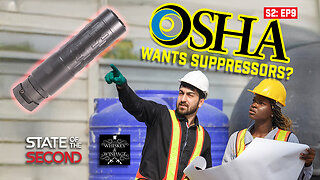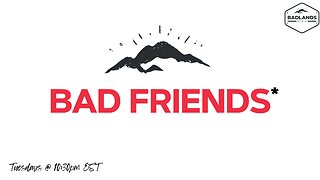Premium Only Content

NO PHOTOS! YOU MAY BE COMPETITION
BUY ME A COFFEE - https://www.buymeacoffee.com/ukmtt
Cubic turnstiles, also known as Cubic Corporation turnstiles, are a type of access control system commonly used in transportation hubs, stadiums, and other venues where crowd management and ticket validation are necessary. Cubic Corporation is a global company that specializes in transportation and defense systems, including turnstile solutions.
Cubic turnstiles are designed to control the flow of people by allowing only one person to pass through at a time. They consist of a rotating barrier or gate that opens and closes to permit entry or exit. Typically, these turnstiles are equipped with ticket readers or electronic validators to validate tickets, access cards, or other forms of identification before granting passage.
The ticket validation process in Cubic turnstiles ensures that only individuals with valid tickets or authorized access cards can enter the designated area. This helps prevent unauthorized entry and ensures proper ticketing or access control for events, public transportation systems, or restricted areas.
Cubic turnstiles often incorporate additional features, such as fare collection mechanisms, security cameras, and sensors for counting the number of people passing through. These features contribute to enhanced security, accurate crowd counting, and efficient ticketing processes.
It's worth noting that while Cubic Corporation is a prominent provider of turnstile solutions, there are also other manufacturers and suppliers of turnstiles in the market, each with their own specific designs and features.
"Photography is not a crime" "PINAC" is a phrase often used to advocate for the right to take photographs or record video in public spaces without fear of harassment, intimidation, or legal repercussions. The phrase suggests that photography is a form of free speech and expression that should be protected by law, and that the act of taking photographs should not be considered a criminal offence. The use of this phrase is often associated with instances where photographers, journalists, or citizens have been stopped or detained by law enforcement or security personnel for taking photographs in public places, even though they have not violated any laws or regulations.
-
 10:45
10:45
The Rich Dad Channel
20 hours agoWhy Working Hard Will Keep You Poor (Unless You Do This)
11.4K3 -
 16:32
16:32
Melonie Mac
16 hours agoPhoebe Waller Bridge fails to deliver Tomb Raider script
16.8K5 -
 17:19
17:19
ARFCOM Reviews
19 hours ago $0.55 earnedComplete SI Pistol Build | Strike Arms Compact Pistol
12.3K1 -
 1:08:43
1:08:43
MTNTOUGH Fitness Lab
15 hours agoInside the WILDEST Career Switch: How a Ballroom Dancer Conquered the Hunting World
18.1K5 -
 26:57
26:57
Uncommon Sense In Current Times
16 hours ago $0.53 earnedDefending Your Christianity Without Overcomplicating It (Part 1) | Greg Koukl
14.8K5 -
 52:58
52:58
State of the Second Podcast
13 hours agoThe Unfiltered HONEST Truth About the Firearms Community (ft. Whiskey & Windage)
17.2K5 -
 2:22:54
2:22:54
Badlands Media
15 hours agoBad Friends Ep. 1: In the Beginning Was the Word... and a Lot of Chaos
87.1K73 -
 2:57:33
2:57:33
TimcastIRL
12 hours agoFBI CAUGHT Rigging 2020 Election, Leaked Chat Logs PROVE COVER UP w/Michael Malice | Timcast IRL
276K229 -
 2:30:03
2:30:03
The Quartering
13 hours agoWisconsin Supreme Court Race RESULTS Brad Schimel Vs Susan Crawford!
124K59 -
 1:53:02
1:53:02
Laura Loomer
14 hours agoEP113: Canada's CCP Pipeline EXPOSED
89.4K54